Kansas’ Flint Hills Trail State Park

Trail of the Month: November 2018
“Kansas is the heart of America, and people will be pleasantly surprised by what they find here.”
—Linda Craghead, interim secretary of the Kansas Department of Wildlife, Parks and Tourism
Nestled into the gentle greens and golds of a vast prairie, rolling under leafy branches arched overhead like cathedral rooftops, and connecting small towns with friendly Midwestern charm, the Flint Hills Trail State Park proves there’s no place like Kansas. This summer, the 117-mile rail-trail—the longest rail-trail in the state and one of the longest such corridors in the country—was designated as a state park, a reflection of its growing significance as an iconic American destination.
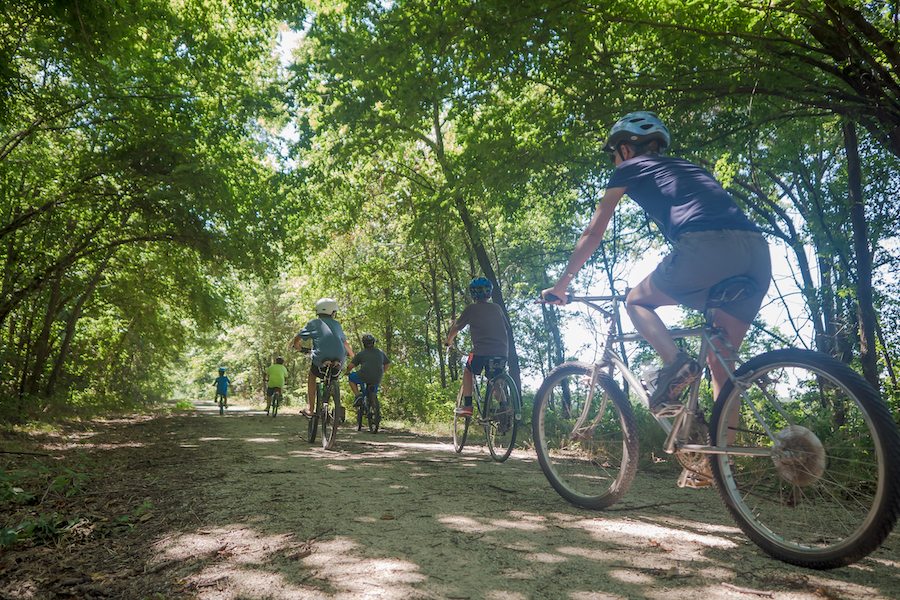
“The Flint Hills Trail State Park offers something unique to all Kansans, especially those who like hiking, biking and exploring,” said Governor Jeff Colyer, who signed the legislation creating the state park. “We hope the state park brings more tourism to Kansas so other people can see the beauty our great state has to offer.”
In the months leading up to the decision, Rails-to-Trails Conservancy partnered with Kanza Rail-Trails Conservancy, the all-volunteer group that has developed the trail, to rally trail enthusiasts to contact their state legislators in favor of the bill that would make the trail a state park. Thanks to RTC members and supporters who heeded the call to action, the effort was a resounding success.
Journeying across five rural counties in eastern Kansas, adventurers on this crushed-stone pathway will have a sense of the travelers who came before. The rail-trail partially follows the Santa Fe National Historic Trail, a travel route in use between 1821 and 1880 that was key to the development of the American West. You can catch glimpses of this past in the old wagon ruts left behind and in the relics of trading posts and other historical buildings that still stand today. The 200th anniversary of the commencement of this historic route connecting Missouri and Santa Fe, New Mexico, will be celebrated in many of the towns here in 2021.
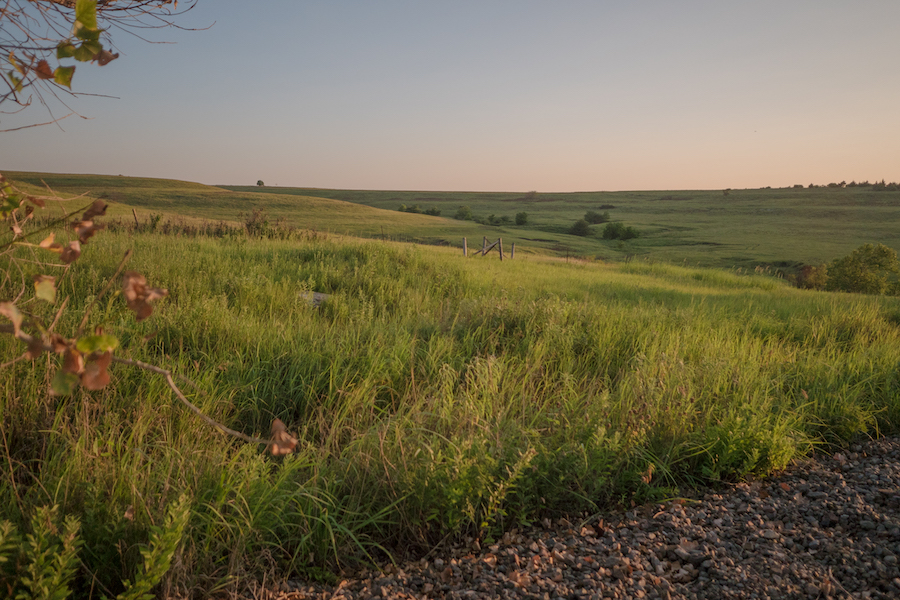
Traversing the Flint Hills, for which the trail is named, travelers will be surrounded by nature’s history: one of the last remaining tallgrass prairie ecosystems in the world. “Kansas is home to one of the most endangered eco-regions: the tall-grass prairie,” said Linda Craghead, interim secretary of the Kansas Department of Wildlife, Parks and Tourism. “The trail provides an opportunity to educate people of the importance of this biodiverse region.”
A Trail Blooms in the Sunflower State
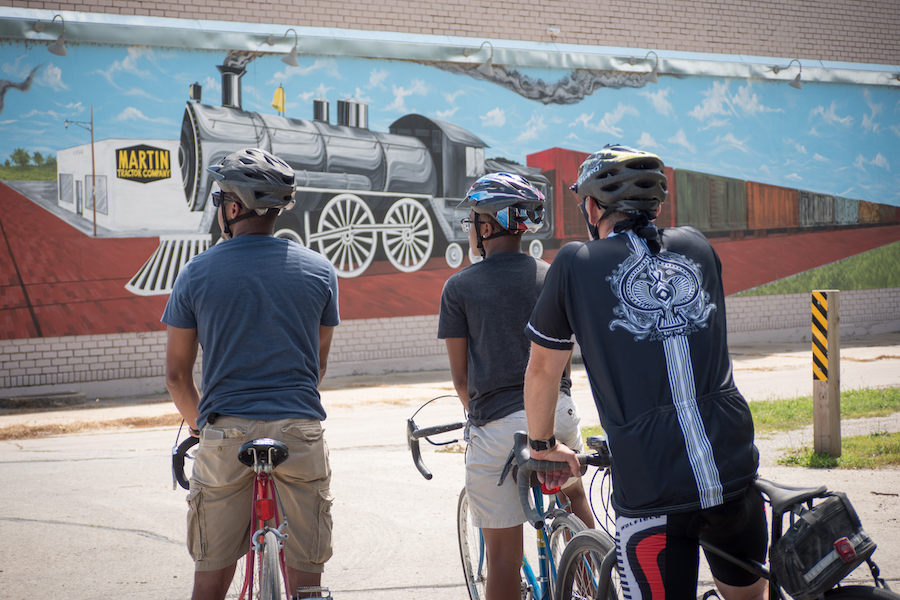
The rail-trail’s own history dates to the late 1800s, when Missouri Pacific Railroad trains rumbled through the corridor between Kansas City and Pueblo, Colorado. The line was later purchased by Union Pacific Railroad, but service was discontinued in the 1990s. Rails-to-Trails Conservancy acquired and railbanked the corridor in 1995, transferring it over to the Kansas Horseman Foundation to spearhead the efforts to transform the route into a trail for bicycling, walking and equestrian use. Over the years, progress on the trail stalled, and trail advocates eventually regrouped into the Kanza Rail-Trails Conservancy to re-energize the project.
“Around 2000 or 2001, a group of people that wanted to see the trail get done reorganized,” said Doug Walker, president of Kanza Rail-Trails Conservancy. “Our board is all volunteers, and we’ve built the trail wherever we’ve had volunteers actively working.”
The second time proved to be the charm. According to Walker, with dedicated volunteer effort and grassroots funding, the first section of trail—just a few miles long—was completed in 2003. By 2005, another 17 miles were underway: a section between Osawatomie, on the trail’s eastern end, and the vibrant college town Ottawa. Year after year, mile after mile, the trail continued to grow. Today, the trail is traversable for 96 miles, from Osawatomie to Council Grove. Its western tip, extending westward 21 miles from Council Grove to Herington, will be the last piece to fall into place.
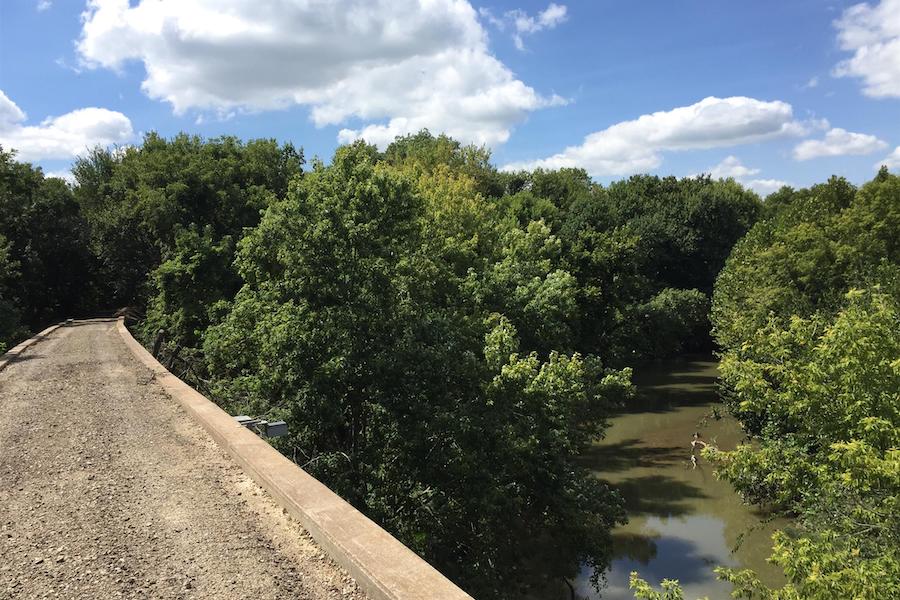
Just a few years ago, the project received a game-changing boost: a federal Transportation Alternatives grant of $1.9 million for trail development. “In 2013, the state got interested in it,” said Walker of the initial meeting between trail volunteers and Linda Craghead. “She said, ‘I’m coming from the government, and I want to help you.’ I come from politics and was skeptical, but she really delivered.”
Walker’s political background is his eight-year stent in the Kansas Senate, where his passion for rail-trails first bloomed. “The Prairie Spirit Trail was in my district,” said Walker of Kansas’ 51-mile rail-trail, which graces the Rail-Trail Hall of Fame. “I was very supportive of it, but back then, in 1996, there was very little support for trails. There were no trails!”
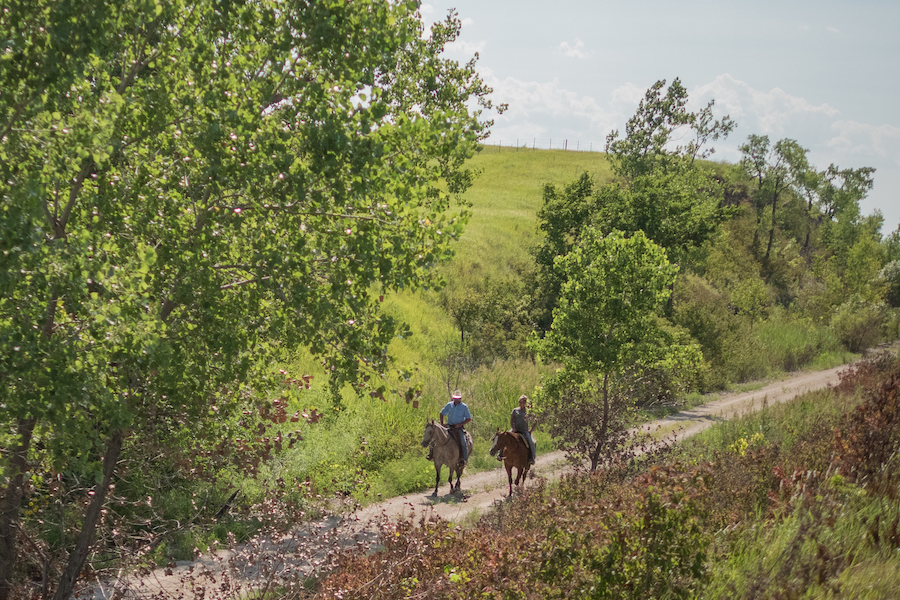
It was foreshadowing for the uphill battle that the Flint Hills Trail faced as the project began to be realized. “It’s amazing to me how people’s attitudes have changed from 2005 to now,” said Walker. “In 2005, there was a tremendous amount of opposition, but none of the things they claimed the trail would cause—crime, drug use, vandalism—has happened.”
Over time, the unrealized fears surrounding the trail dissipated, and support for the project grew. “There are people on the trail all the time, no matter where you go,” said Walker. “And they come from all over.”
With a desire for trails now growing in these Kansas communities, the Kanza Rail-Trails Conservancy is putting renewed focus on the Landon Nature Trail, another rail-trail which will tie into the Flint Hills Trail east of Pomona Lake and go all the way north to Topeka, the Kansas capital. Much of the 38-mile pathway is already complete and offers a tranquil, tree-lined escape.
Nature and Culture and History, Oh My!
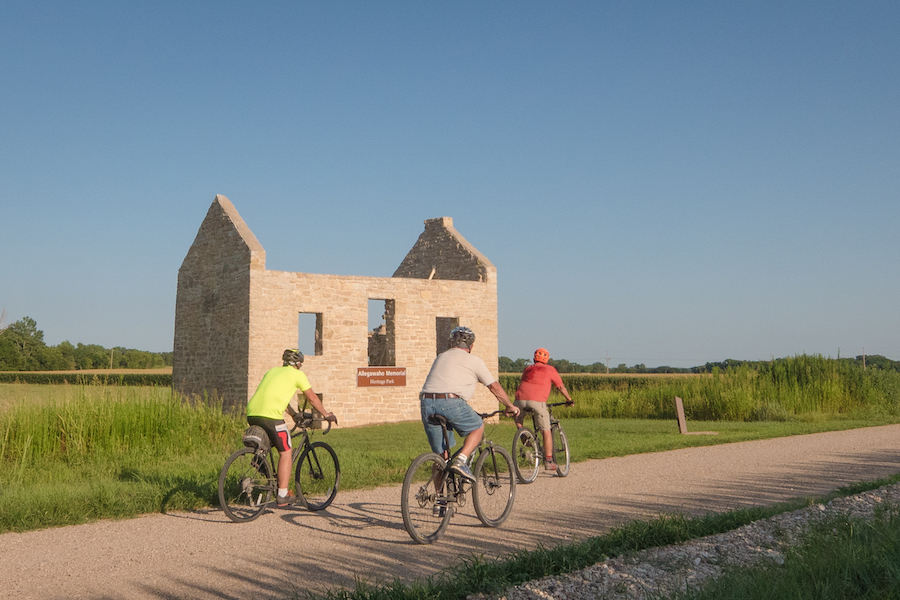
With tourists increasingly taking notice of the newly designated state park, business opportunities are growing. Many of the towns along the route support restaurants, bed-and-breakfasts and other services—including a “horse motel” for equestrian trail riders at the Salt Creek Ranch. And, just last month, Ottawa Bike and Trail, a bike shop offering rentals and trail tours, opened a block from the trail.
This summer, the City of Ottawa also announced plans for a new community gathering space located where the Flint Hills Trail meets the Prairie Spirit Trail; the upcoming Legacy Square will be a place for farmers markets, music concerts, art fairs and other events in the burgeoning trail town.
“In the City of Ottawa, it’s amazing to see the excitement and energy,” said Craghead. “The city serves as the crossroads of two major trails, and businesses are popping up left and right.”
Heading east from Ottawa, the trail snakes along the wooded bluffs of the Marais Des Cygnes River (the name given by French explorers for the “Marsh of the Swans”), ending in Osawatomie. Here history buffs will want to check out both the town’s history museum, which includes railroad artifacts, and the John Brown Museum, which details the abolitionist’s role in the fight over whether or not to make the new Kansas territory a free state or slave state just before the Civil War broke out.
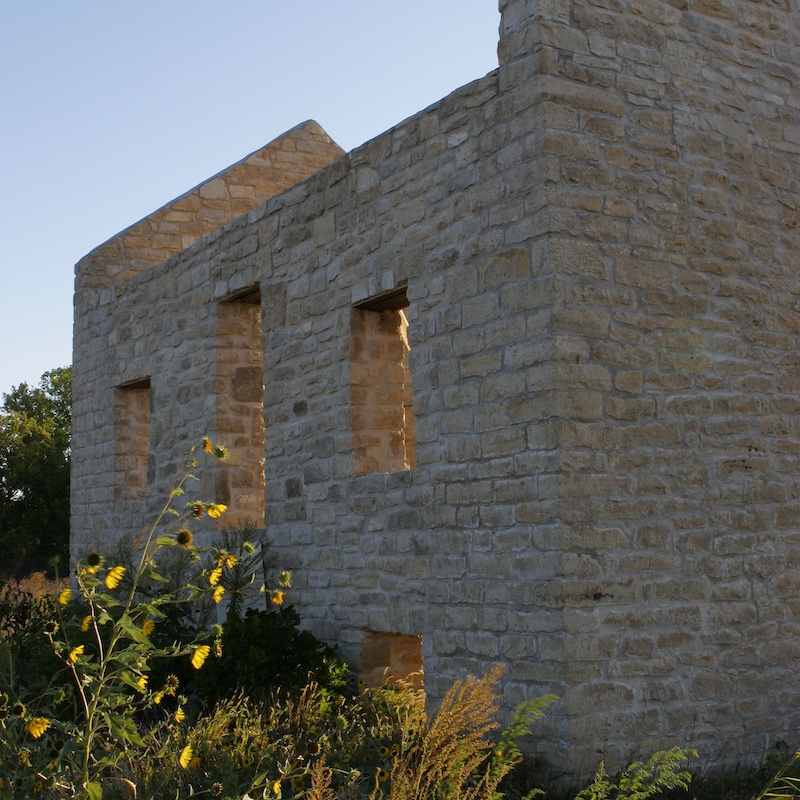
Westbound, the trail is dotted with numerous memorable trailside attractions, including Rantoul’s “airplane graveyard,” Pomona’s beautiful state park (one of several camping options along the trail), the Allegawaho Heritage Memorial Park (which honors the history of this former Kaw tribe homeland) and several historical sites in Council Grove, so named for the oak trees beneath which a treaty was signed by the Osage tribe to grant passage through their territory for the newly established Santa Fe Trail.
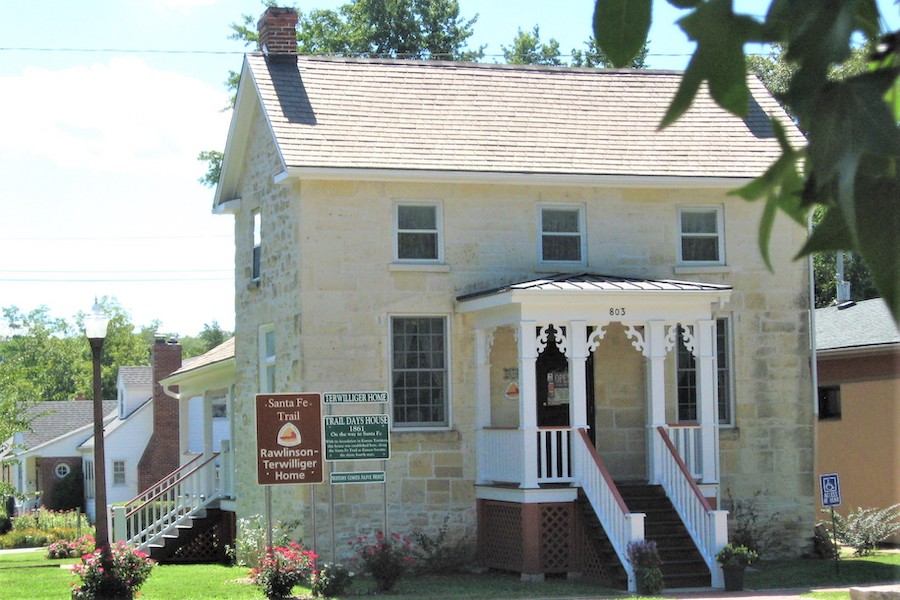
On the west end of Council Grove, a unique restaurant worth noting is the award-winning Trail Days Café and Museum, which presents interesting anecdotes for every item on their historically based menu. In the historical home, built in 1860–61, diners are surrounded by artifacts—like an antique chair from the old depot nearby and original railroad lamps—that the guests can peruse while their homecooked meal is being prepared. The proprietors, who dress in late 1880s attire, delight in sharing the rich history of the region and stories about the city’s interesting inhabitants.
“People in Kansas are special,” said Craghead. “When I talk to people that come here, they comment on the rolling hills and the beauty of the sky, the architecture and the history and culture that exists here, but they are also just amazed with the people. Kansas is the heart of America, and people will be pleasantly surprised by what they find here.”
Related Links
Kanza Rail-Trails ConservancyKansas Department of Wildlife, Parks and Tourism
Trail Facts
Name: Flint Hills Trail State Park
Used railroad corridor: Missouri Pacific Railroad
Trail website: Kanza Rail-Trails Conservancy
Length: The full corridor is 117 miles long; currently, 96 miles of the trail are open for use between Osawatomie on the trail’s eastern end and Council Grove to the west. The rail-trail’s western tip—between Council Grove and Herington—is not yet developed.
Counties: Franklin, Lyon, Miami, Morris and Osage
Start point/end point: The open section of the trail begins 1.5 miles west of downtown Osawatomie, 0.3 mile south of John Brown Highway/Parker Avenue. The trail ends at the trailhead on the east end of Council Grove on Donnon Street, 0.2 mile south of Main Street.
Surface type: The completed trail, between Osawatomie and Council Grove, is hard-packed, crushed limestone. The unfinished westernmost section of the trail, between Council Grove and Herington, remains ballast.
Grade: The rail-trail has a relatively level railroad grade.
Uses: Walking and bicycling (hybrids or mountain bikes are recommended) are popular year-round pursuits. Nearly the entire trail is also available for equestrian use, though there is one small section of 3.5 miles which is not recommended for horseback riders. In this section, between Ottawa and Pomona, the trail parallels very active railroad tracks, and trail advocates caution that the fast-moving trains might spook a horse. In winter, the trail can be used for cross-country skiing, but there generally isn’t enough snowfall to warrant this activity.
Difficulty: The most challenging aspect of the trail is that there are no public restrooms or drinking fountains provided for travelers. However, towns are spaced roughly 10–15 miles apart along the route for pit stops and refreshments; for ease of planning, the Kanza Rail-Trails Conservancy provides a directory of trailside services and businesses on their website.
Getting there: The closet airport with commercial airline service is the Manhattan Regional Airport (5500 Skyway Drive, Manhattan), about 45 miles north of the western trailhead in Council Grove. Just over the state line, another option is the Kansas City International Airport (601 Brasilia Ave., Kansas City, MO), which is just over an hour’s drive from the eastern trailhead in Osawatomie.
Access and parking: Flint Hills Trail State Park is located on the more populated eastern side of the state, about an hour’s drive from two major metropolitan areas: Kansas City and Topeka. Two interstates also cross the trail: I-35 and I-335, making access easy and convenient by car. Parking is available in the many towns that the extensive trail connects; see TrailLink.com for parking locations on the interactive map, or the access points listed on the Kanza Rail-Trails Conservancy website.
To navigate the area with an interactive GIS map, and to see more photos, user reviews and ratings, plus loads of other trip-planning information, visit TrailLink.com, RTC’s free trail-finder website.
Rentals: A variety of bikes can be rented from the newly opened Ottawa Bike and Trail (130 S. Main St., Ottawa; phone: 913.951.1070), located within blocks of both the Flint Hills Trail and the Prairie Spirit Trail. The shop can also provide customized van-supported bike tours.

Donate
Everyone deserves access to safe ways to walk, bike, and be active outdoors.
